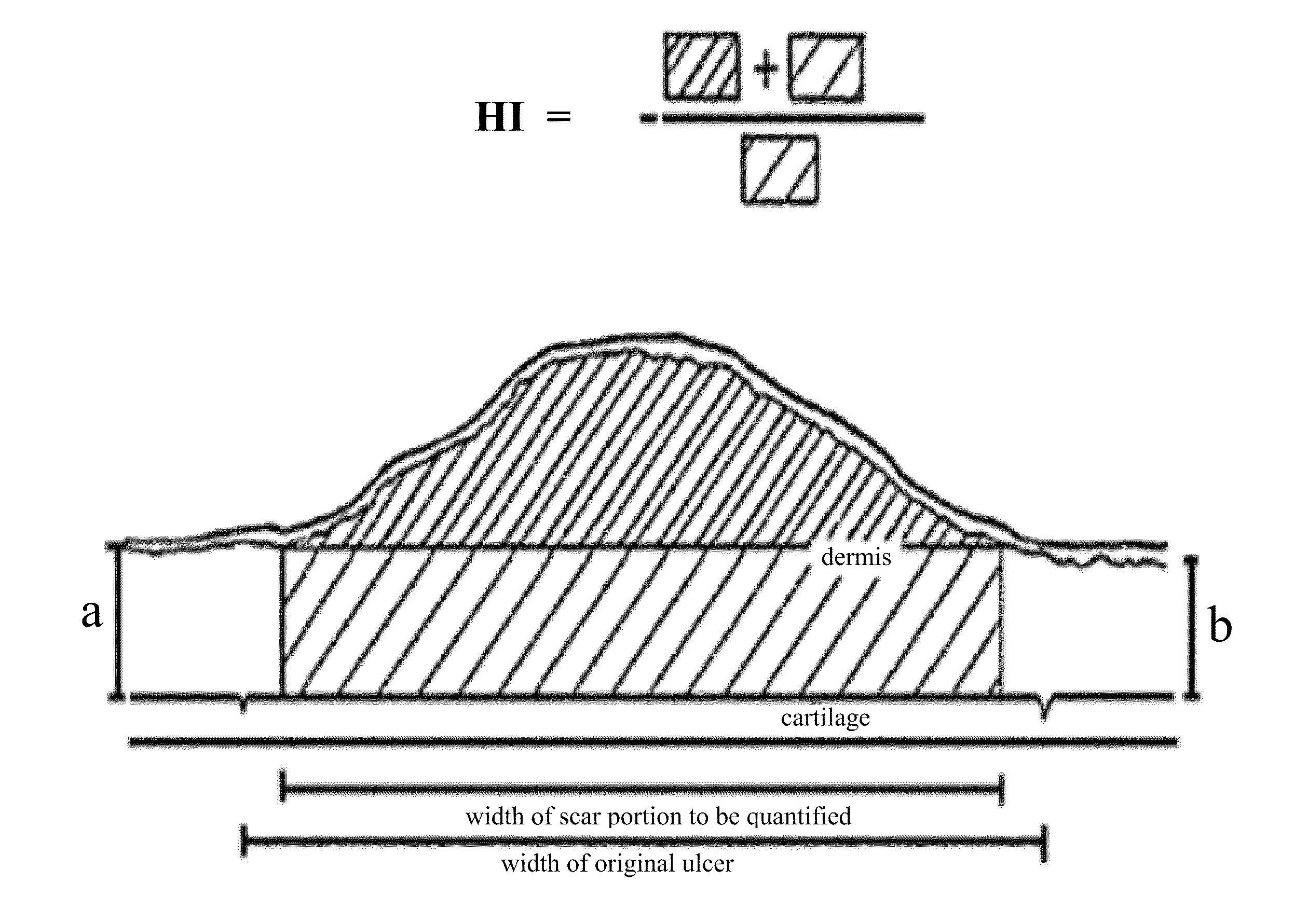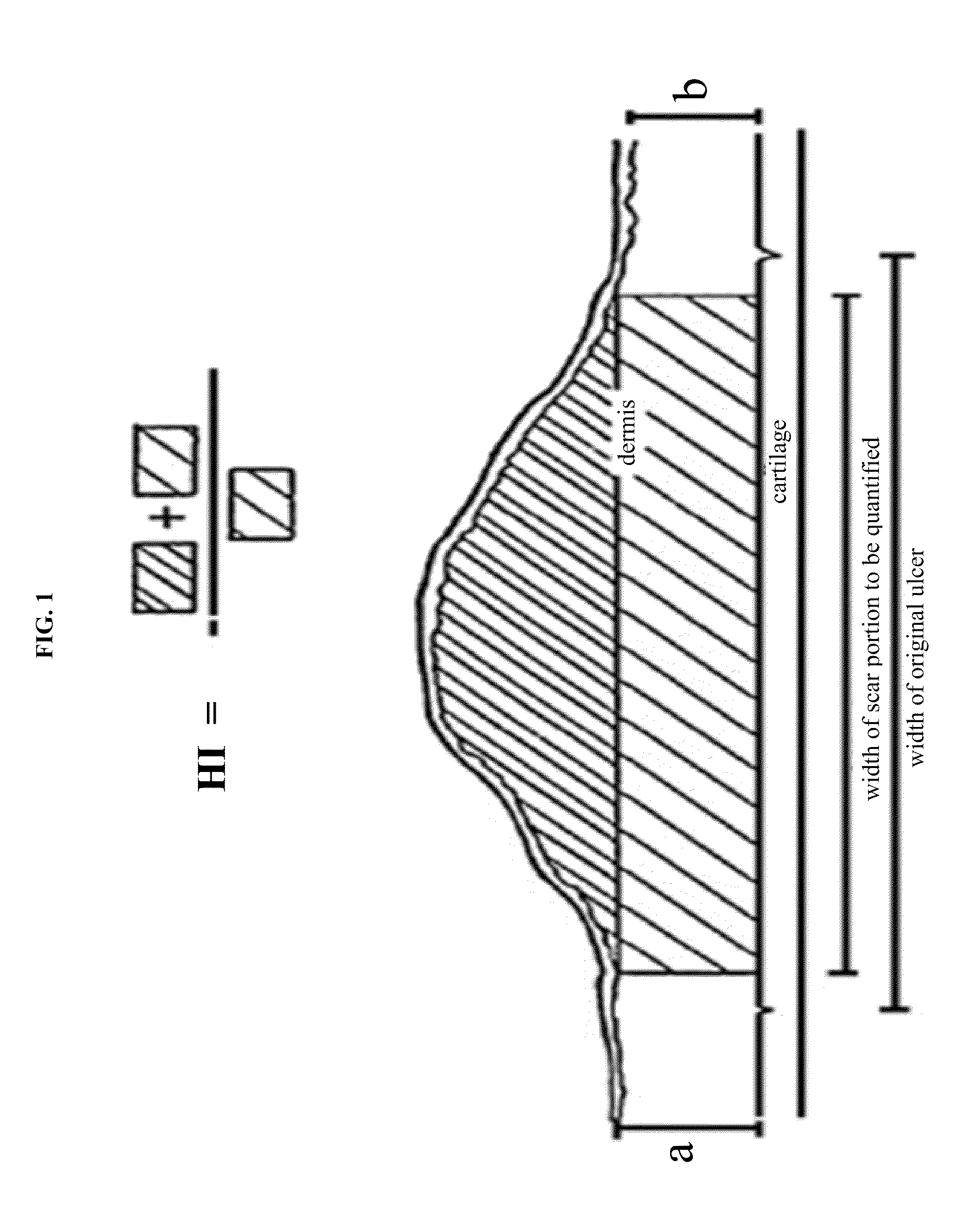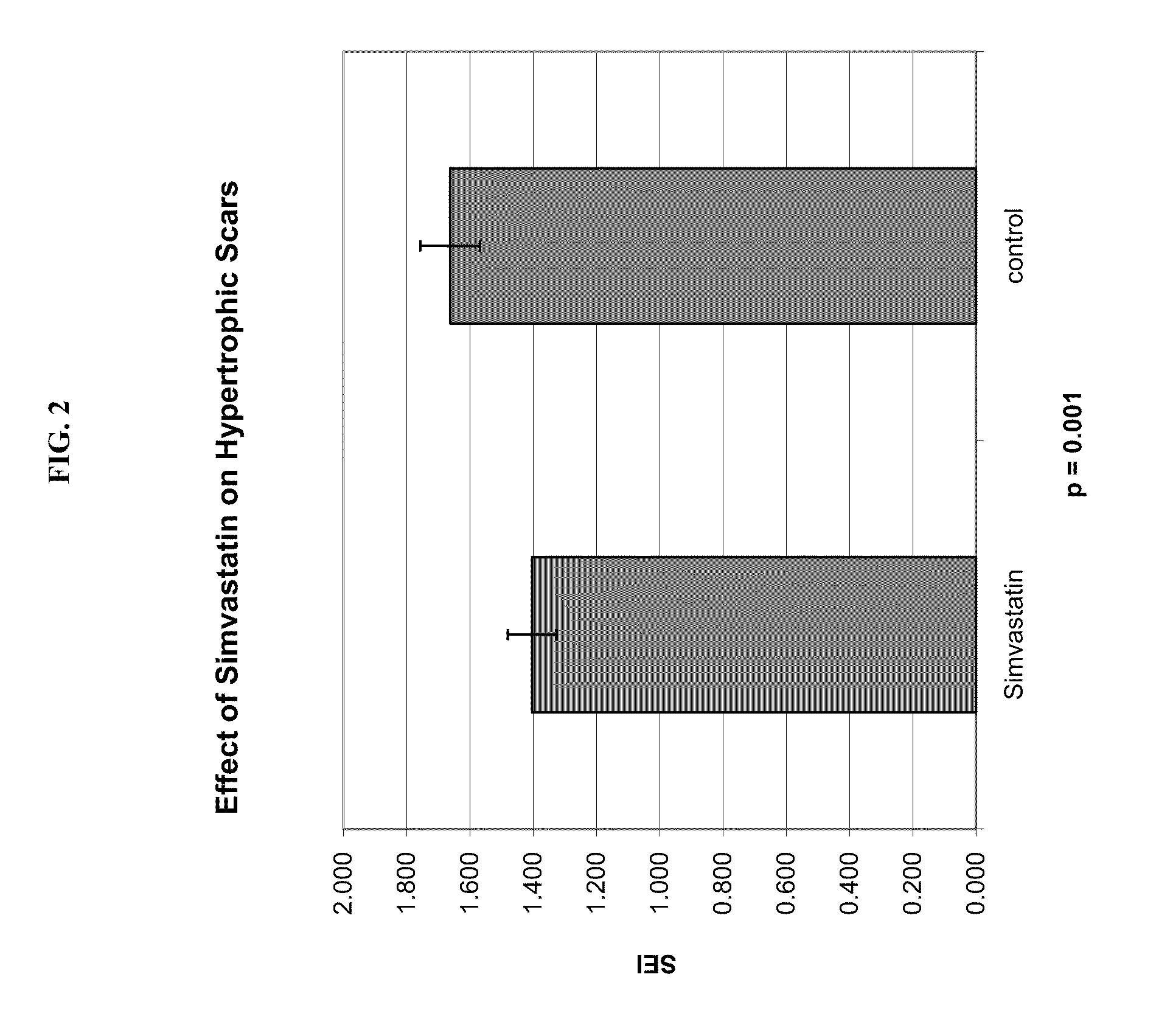Methods for scar prevention
a scar prevention and scar technology, applied in the field of scar prevention methods, can solve the problems of pain, puritic sensation, pain, etc., and achieve the effect of reducing pain, reducing scar formation, and reducing scar formation
- Summary
- Abstract
- Description
- Claims
- Application Information
AI Technical Summary
Benefits of technology
Problems solved by technology
Method used
Image
Examples
example 1
Evaluation of the Effects of Simvastatin on Hypertrophic Scar Formation
An established hypertrophic scar model was employed for all procedures described herein (Brown et al. (2008) Plast. Reconstr. Surg. 121:1165-1172; Kim et al. (2003) Wound Repair Regen. 11:368-372; Kryger et al. (2007) J. Am. Coll. Surg. 205:78-88; Lu et al. (2005) J. Am. Coll. Surg. 201:391-397; Morris et al. (2007) Plast. Reconstr. Surg. 100:674-681; Reid et al. (2006) Wound Repair Regen. 14:138-141; Reid et al. (2007) J. Plast. Reconstr. Aesthet. Surg. 60:64-72; Saulis et al. (2002) Plast. Reconstr. Surg. 110:177-183; each herein incorporated by reference in its entirety). A pilot study was conducted using two rabbits to evaluate the effects of Simvastatinon hypertrophic scar formation. Given the concentrations used with in vitro studies on lung fibroblasts (Watts et al. (2005) Am. J. Respir. Cell Mol. Biol. 32:290-300; Watts et al. (2006) Respir. Res. 7:88-102; each herein incorporated by reference in its enti...
example 2
Effect of Simvastatin, Lovastatin, or Pravastatin on Hypertrophic Scar Formation
Experiments were performed to analyze three dosage levels of three statins (Simvastatin, Lovastatin, or Pravastatin) on hypertrophic scar formation using the rabbit ear model described (see, e.g., Example 1 and Brown et al. (2008) Plast. Reconstr. Surg. 121:1165-1172; Kim et al. (2003) Wound Repair Regen. 11:368-372; Kryger et al. (2007) J. Am. Coll. Surg. 205:78-88; Lu et al. (2005) J. Am. Coll. Surg. 201:391-397; Morris et al. (2007) Plast. Reconstr. Surg. 100:674-681; Reid et al. (2006) Wound Repair Regen. 14:138-141; Reid et al. (2007) J. Plast. Reconstr. Aesthet. Surg. 60:64-72; Saulis et al. (2002) Plast. Reconstr. Surg. 110:177-183; each herein incorporated by reference in its entirety). A total of 28 rabbits were included in the study (New Zealand White). Wound dimensions were 7 mm. The study protocol was as follows:
Post-Operative Day 0:
7-mm wounds were made with perichondrium left intact (6 wou...
example 3
Effect of Simvastatin on CTGF Expression
In an additional experiment, a similar protocol was conducted using only low-dose (40 μM) Simvastatin injections, administered on days 18, 19, 20, with sacrifice and harvest on day 21. Each wound was bisected, with half of the wound embedded in paraffin, cut, and stained with hematoxylin and eosin (H&E) in order to evaluate the SEI; and half flash-frozen for RNA to subsequently be extracted and PCR used to detect levels of connective tissue growth factor (CTGF) in wound tissue. PCR demonstrated down-regulation of CTGF (FIG. 9), confirming the hypothesis that CTGF plays a significant role in wound healing and that administration of Simvastatin is correlated with down-regulation of CTGF.
PUM
| Property | Measurement | Unit |
|---|---|---|
| delay time | aaaaa | aaaaa |
| delay time | aaaaa | aaaaa |
| delay time | aaaaa | aaaaa |
Abstract
Description
Claims
Application Information
 Login to View More
Login to View More - R&D
- Intellectual Property
- Life Sciences
- Materials
- Tech Scout
- Unparalleled Data Quality
- Higher Quality Content
- 60% Fewer Hallucinations
Browse by: Latest US Patents, China's latest patents, Technical Efficacy Thesaurus, Application Domain, Technology Topic, Popular Technical Reports.
© 2025 PatSnap. All rights reserved.Legal|Privacy policy|Modern Slavery Act Transparency Statement|Sitemap|About US| Contact US: help@patsnap.com



